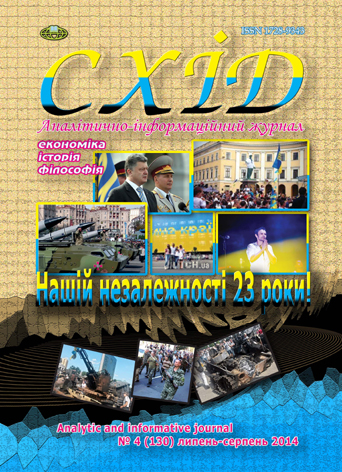European Central Bank as a lender of last resort
DOI:
https://doi.org/10.21847/1728-9343.2014.4(130).26688Keywords:
lender of last resort, European Central Bank, financial crisis, sovereign debt crisis, moral hazard, inflation, solvency, liquidity, contagious risks, bonds, OMT, EFSF, ESMAbstract
The article deals with the notion "the lender of last resort". First of all, it tackles upon classic interpretations of the LLR and the theories in the basis of the notion. It explores the evolution of the theoretical framework and touches upon practical experience. Basing on the works of the prominent contemporary scientists the article tends to answer the question of the kind of changes that caused the revision of the LLR theory and reasons why the question of the ECB as LLR is important nowadays. The article discusses the problems the EU and the ECB are currently facing, when the question of ECB as a LLR arises. The opinions of the prominent scientist on this topic are analyzed in order to understand the difference between the LLR for banks and for the governments, and the advantages and disadvantages for the EU economic stability. The text highlights main arguments of the scholars, who are in favor and those, who are against the ECB as an LLR both for the banks and for the governments and makes a conclusion on the perspectives of the ECB as an LLR.Downloads
References
Xavier, Freixas & Parigi, Bruno M. (2008), Lender of Last Resort and Bank Closure Policy, Cesifo working paper № 2286, Category 6: Monetary policy and international finance (engl).
Vollmer, Uwe (2009), Do We Need a European Lender of Last Resort?, Intereconomics (engl).
Hunzphmy, Thomas M. (1989), Lender of last resort: concept in history, Federal Reserve Bank of Richmond, Economic review (engl).
Snoddy, Iain (2012), From Thornton, to Bagehot, to the European Central Bank: An Analysis of the Lender of Last Resort, The Student Economic Review, Vol. XXVI (engl).
Goodheart, Charles A.E., Huang, Haizhou (2004), The lender of last resort, Journal of Banking & Finance (engl).
De Grauwe P. (2011), The European Central Bank: Lender of Last Resort in the Government Bond Markets? CESIFO Working Paper N 3569l, Category 7: Monetary Policy and International Finance (engl).
Drechsler I., Drechsler T., Marques-Ibanez D., Schnabl P. (2013), Who Borrows from the Lender of Last Resort?, available at: http://citeseerx.ist.psu.edu/viewdoc/similar?doi=10.1.1.406. 4044&type=ab (consulted on 24.07.14).
Organesyan, Gayane (2013), The Changed Role of the Lender of Last Resort: Crisis Responses of the Federal Reserve, European Central Bank and Bank of England, Institute for International Political Economy, Berlin, Working Paper, No. 19 (engl).
Official Journal of the European Union (2012), Consolidated version of the Treaty of European Union and the Treaty on the Functioning of the European Union, Official Journal of the European Union, October 26 (engl).
Panico, Carlo, Рurificato, Francesco (2013), The Debt Crisis and the European Central Bank's Role of Lender of Last Resort, Political Economy Research Institute, University of Massachusetts Amherst, Working paper series, № 306 (engl).
Winkler A. (2014), The ECB as Lender of Last Resort: Banks versus Governments, LSE Financial Markets Group Special Paper Series (engl).
Downloads
Published
How to Cite
Issue
Section
License
Copyright (c) 2014 Nika Palaguta

This work is licensed under a Creative Commons Attribution-NonCommercial-NoDerivatives 4.0 International License.
1. Authors bear responsibility for the accuracy of facts, quotations, numbers and names used.
2. Manuscripts are not sent back.
3. The publisher does not always agree with the authors' opinion.
4. The authors reserve the right to authorship of the work and pass the first publication right of this work to the journal under the terms of a Creative Commons Attribution-NonCommercial-NoDerivatives 4.0 International License. This license allows others to distribute (copy) the published work for non-commercial purposes, provided there is mandatory attribution to its authors and a link to the first publication in our journal.
5. The authors have the right to conclude separate supplement agreements that relate to non-exclusive work distribution in the form in which it has been published by the journal (for example, to upload the work to the online storage of the journal or publish it as part of a monograph), provided that the reference to the first publication of the work in this journal is included.

